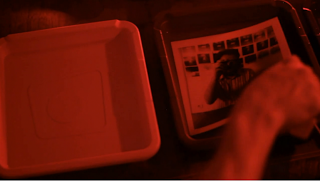Article: http://www.gizmag.com/pathway-sprayon-coating/29468/
A company in the UK called Pro-Teq developed Starpath which is a spray-on coating that lights up the road. It works by absorbing UV light during the day and releasing it at night as an intense glow. The coating has been proven to work best over tarmac or concrete.
The spray coating is water-resistant and non-reflective. It is also available in 11 different colors. In addition, Starpath has very low installation and maintenance costs. Not only is the coating cost saving but also labor efficient.
Additionally, the surface can be used almost immediately after being sprayed. All in all, the product has many good aspects and advantages. However, it does have a setback. During the winter months, the path would not be able to absorb much light, and it can also get covered in snow.
Monday, October 21, 2013
Wednesday, October 16, 2013
Tech Tuesdays: "5 Surreal Gadgets for Surviving a Horrifying Apocalypse"
Article: http://www.wired.com/design/2013/09/these-post-apocalyptic-sci-fi-organs-are-meant-for-humans/
An engineering design firm called Takram has designed a kit known as Shenu which consists of artificial organs that conserve the water usage of the human body. The kit contains five organs that are meant to be implanted into key locations. These locations are where fluid is most frequently lost.
The nasal-cavity inserts prevent water loss due to exhalation by condensing the air from our lungs and returning it upon inhalation. A neck collar with arterial jugular heat exchangers inhibits water loss through perspiration and produces electricity from body temperature. The urine concentrator acts as a water filtration and concentration plant by increasing the fecal duration in the long intestine and squeezing out any remaining water. A hard-candy like nutrient is also included in the kit, and it serves to replace loss hydration.
The organs are all made of human-safe material such as aluminum, titanium, and ceramic. Additionally, the organs are capable of retaining 2 liters of water that humans tend to lose on a daily basis. Although these organs are only prototypes, it is possible that they will soon become reality.
An engineering design firm called Takram has designed a kit known as Shenu which consists of artificial organs that conserve the water usage of the human body. The kit contains five organs that are meant to be implanted into key locations. These locations are where fluid is most frequently lost.
The nasal-cavity inserts prevent water loss due to exhalation by condensing the air from our lungs and returning it upon inhalation. A neck collar with arterial jugular heat exchangers inhibits water loss through perspiration and produces electricity from body temperature. The urine concentrator acts as a water filtration and concentration plant by increasing the fecal duration in the long intestine and squeezing out any remaining water. A hard-candy like nutrient is also included in the kit, and it serves to replace loss hydration.
The organs are all made of human-safe material such as aluminum, titanium, and ceramic. Additionally, the organs are capable of retaining 2 liters of water that humans tend to lose on a daily basis. Although these organs are only prototypes, it is possible that they will soon become reality.
Tech Tuesdays: "Researchers build an audio speaker out of stretchy transparent gel"
Article: http://www.gizmag.com/transparent-audio-speaker-ionic-gel/28875/pictures#2
A research group at Harvard University built a flexible speaker out of transparent gel. The ionic gel can produce high-quality sound which ranges across the full audible spectrum. This gel speaker demonstrates how an electric charge passing through ions instead of electrons could be used in electronic devices.
In order to create the speaker, the scientists took a transparent rubber sheet and placed a layer of conductive saltwater gel to each side. As soon as voltage is applied to opposite edges of the gel layers, the entire piece of rubber begins to flex rapidly. This produces sounds ranging from 20 Hz to 20 kHz.
Due to its ionic properties, the gel speaker is very flexible and can be stretched to several times its normal area and still function properly. Additionally, its voltage can be easily controlled by the scientists. Therefore, this project has proven that ionic conductors can potentially offer more advantages than conductors used today.
Tuesday, October 1, 2013
Tech Tuesdays: "Enfojer lets you develop photographic prints straight from your smartphone"
The Enfojer is a stand that allows you to print black and white photographic prints straight from your smartphone. It is compatible with any smartphone under 141 x 71mm (5.55 x 2.80in) in size. In addition, there is an app that was created for the Enfojer that lets you edit the photo before you print it and guides you through the process.
After the photo is edited, all you need to do is insert the smartphone into the enclosure screen side down. Next, focus the image with adjustable lenses onto the photographic paper placed underneath the stand, and then push a button to begin the printing process. Its takes about 6 minutes to expose a photograph onto a silver halide photographic paper. And due to the imperfections in the paper and the chemistry involved in the development of the photograph, each print achieve a unique look.
The Enfojer kit includes most of the equipment needed such as the stand, trays, and battery-powered red light. However, the kit does not include the chemicals required to develop the photographs due to the difficulties of shipping chemicals overseas. An Indiegogo campaign has already been launched in order to raise funds for this project. The Enfojer stand can be secured with a payment of $200 and the first shipment of Enfojers is set for February.
Subscribe to:
Posts (Atom)





